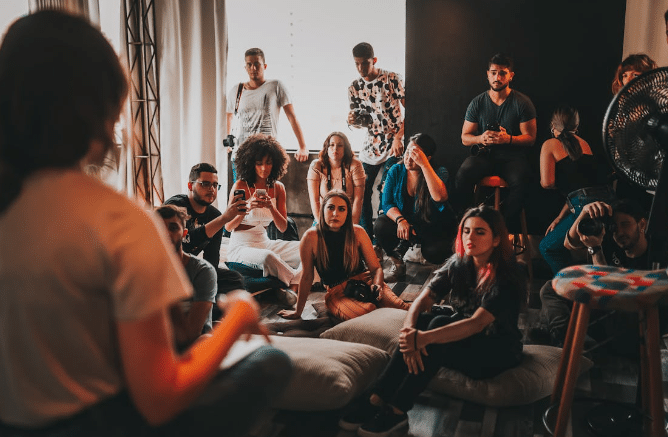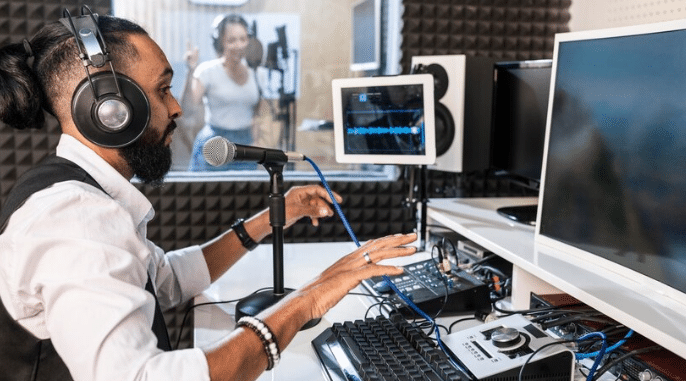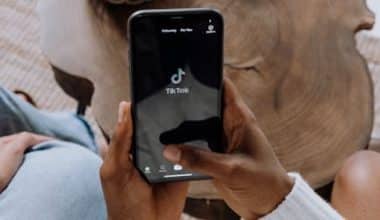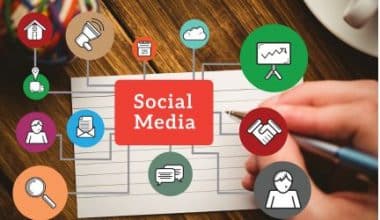Radio Media Tour reach listeners all across the nation from our state-of-the-art studios. Whether the spokesperson is live in the studio or calling in from their home, your news, entertainment, or feature story reaches your targeted audience and is documented and verified via a final report.
As a public relations or marketing expert, you know that a well-executed radio media tour can significantly boost your brand’s visibility and credibility. But how can you ensure your radio media tour hits the mark? In this article, I’ll dive into six proven tips for a successful radio media tour, backed by stats, professional insights, and individual experiences. In the end, you’ll have a clear road map and practical recommendations to help you successfully negotiate the complex world of radio media and plan your next tour.
Key Takeaways
- Radio media tours allow you to reach a vast audience across different demographics, geographic locations, and time zones, ensuring broad visibility and engagement.
- By appearing on radio shows, you can establish yourself as a credible and trustworthy expert in your field. This credibility boosts brand reputation and fosters trust among listeners.
- With detailed metrics such as audience reach, engagement levels, and media attention, you can measure the effectiveness of your radio media tour. This data-driven approach helps refine future strategies for better results.
- Establishing connections with radio hosts, producers, and listeners can lead to future interview opportunities and positive word-of-mouth. This network of relationships enhances your brand’s visibility and sustains ongoing media interest.
What is a Radio Media Tour
A media tour in public relations involves a series of interviews with various media outlets, including radio stations, TV shows, newspapers, and online platforms. The objective is to advertise a specific message, product, or event. Radio media tours focus specifically on radio interviews, where spokespersons engage with audiences via live or pre-recorded portions. They are a series of scheduled, 10-15 minute interviews that your spokesperson does with ten to twenty specific radio stations. RMTs are powerful and affordable ways to get your message as much radio exposure as possible. They can function as a stand-alone project or, more frequently, as a component of a bigger media campaign that also uses social media and television. The interviews are frequently recorded by the stations and aired later that day or week, but occasionally they are shown live on the day of the RMT.
Reaching a large audience at a reasonable price can be achieved through radio media tours. Over 90% of Americans who are 12 years of age and over listen to the radio once a week, according to Nielsen, making it a widely used communication medium. Brands can reach this large audience through radio media tours, typically at a more intimate level than through other media channels. My previous experience on my first radio media tour was amazing. I had scheduled interviews with multiple local and national radio stations to promote my recently published book. It was tremendously powerful to share my message and speak straight to the audience especially having a direct interaction with the public.
What is the Purpose of Radio Media Tour?
A radio media tour is a powerful tool for businesses, authors, and experts to reach a wider audience, build credibility, and increase visibility. Here are 5 key reasons why a radio media tour is important:
- Direct line and exposure: These allow you to reach a large audience across different demographics, geographic locations, and time zones. With the ability to reach millions of listeners, you can increase your visibility, build your brand, and establish yourself as an expert in your industry.
- Build Credibility and Awareness: Appearing on radio shows can help establish you as a credible and trustworthy source in your industry. Radio hosts and listeners alike will perceive you as an expert, increasing your credibility and trustworthiness.
- Cost-effective marketing: This is a cost-effective way to reach a large audience compared to traditional advertising methods. With the ability to reach millions of listeners, you can maximize your marketing budget and get a higher return on investment.
- Flexibility and convenience: Radio media tours can be done from the comfort of your own home or office, eliminating the need for travel and making it easier to fit into your busy schedule. This flexibility also allows you to reach a wider audience, as you can appear on radio shows in different time zones and locations.
- Measurable results: With a radio media tour, you can track your results and measure the success of your campaign. You can monitor the number of interviews, listeners, and engagement, allowing you to refine your strategy and improve your results over time.
6 Tips for a Successful Radio Media Tour

The six recommendations that follow will help you both enhance your strategy and your outcomes over time. It will enable you to accomplish your objectives of a successful radio media tour and achieve your goals.
#1. Research and Planning
Preparation is the cornerstone of a successful radio media tour. Without thorough research and planning, even the best ideas can fall flat.
With this, you can increase your chances of getting booked on relevant radio shows, ensure you’re prepared for each interview, and maximize your reach and impact with your target audience.
Reasons for Research and Planning:
- Understanding your audience is essential: Make sure your message is relevant to each station’s listeners by customizing it. Are they pensioners, young professionals, or parents who choose to stay at home? Being aware of your audience enables you to create content that specifically addresses their wants and interests.
- Plan Your Discussion Points: Outline your key messages and talking points. his guarantees that you stay on topic and communicate the most crucial facts during interviews. Practice delivering your talking points concisely and confidently.
- Expect Questions: Think ahead about potential questions the hosts might ask. Prepare answers for both common and tricky questions to avoid being caught off guard. Your preparation gives you an air of confidence and knowledge
- Scheduling: Ensure you have all the details about the interview schedules, including the time, format (live or recorded), and any technical requirements. Having a detailed schedule prevents last-minute surprises and helps you manage your time effectively.
#2. Create a Unique Story
A compelling story can make or break your radio media tour. Your story should be engaging, relatable, and memorable. Understanding the core story you want to tell gives more insight into the type of message you pass which is important. A well-defined narrative keeps your audience engaged and makes your message more impactful.
The three things you need to be aware of while drafting a strong narrative are:
- Organize Your Message: An attention-grabbing introduction should come first, then specific details and important arguments, and a compelling call to action should come last. This arrangement keeps your audience interested the entire time while preserving a logical flow.
- Use Clear Words: Use clear and descriptive language to paint a picture in the listeners’ minds. Analogies, metaphors, and storytelling techniques can make your message more memorable and engaging. Avoid jargon and overly technical terms unless your audience is familiar with them.
- Practice: You may improve your delivery and ensure that you can communicate clearly and fluidly in the real interview by practising. Make a recording of yourself and hear the replay to pinpoint the areas that need work.
#3. Invest in Professional Media Training

For anyone starting a radio media tour, media training is a priceless resource. It guarantees that you speak clearly and equips you to handle a variety of situations. Think about spending money on expert media training. Skilled instructors may offer valuable perspectives on managing challenging inquiries, preserving poise, and successfully conveying your ideas. They can also help you practice by simulating actual interview situations.
I’ve benefited from this idea as an expert. Media training has boosted my confidence and increased my performance both during and after interviews. This gives me the ability to manage difficult questions, maintain a positive narrative and build trust with the audience.
#4. Choose your Spokesperson
In close collaboration with you, your broadcast specialist will develop an interview opportunity that appeals to radio station producers and news directors and helps you get your story out to the audience. While certain subjects are better suited for the newsroom or weekend public affairs programming, others are suitable for morning show pitches. A well-written media alert, also known as a press release, catches radio producers’ attention, goes straight to the point, and includes all the pertinent information, such as the spokesperson’s name, availability of days and times, and how to schedule an interview. Additionally, a decent photo of your spokesperson should be included in the warning, even though it’s for radio.
#5. Increase Your Audience with Promotion and Strategic Timing
To get the most out of your radio media tour, promotion and timing are essential. Making a strategic plan guarantees that your message reaches as many people as possible. Plan your interviews for when your intended audience is most likely to be in attendance. The best times to listen to the radio are during the morning and evening drives. Think about the preferences and demographics of your target audience, though
Let’s assume that you are working for a campaign targeting professionals, You scheduled interviews during the morning commute and lunch breaks. These time slots ensured that your message reached listeners when they were most likely to be tuning in, resulting in higher engagement and response rates. During one of my product launch tours, a social media campaign was created which included live updates, Q&A sessions, and exclusive giveaways for listeners. Through social media interaction, this multi-channel strategy increased live listenership and increased the tour’s effect.
#6. Build Strong Connections

Developing enduring connections with listeners, producers, and radio hosts can result in continued success and prospects. Build trusting bonds with the producers and hosts you collaborate with. Act with decency, professionalism, and gratitude. Positive word-of-mouth and upcoming interview possibilities can result from personal contacts.
Throughout a series of interviews, I ensured to express my gratitude to every host and producer by name. This small deed made a big difference in our professional ties by getting me invited back for future parts and guaranteeing that my brand would continue to be shown.
After one of my media tour campaigns, in which I followed up with thank-you emails to each station, I saw that I had secured a fantastic relationship. Because of this tiny gesture of gratitude, I received invitations from other stations to return for more interviews and even recommendations to their colleagues. Developing these connections created a network of media contacts that proved pertinent for upcoming campaigns.
Download our Free Offline Checklist on Tips for a Successful Radio Media Tour.
How to Develop a Strong Partnership:
- Maintain Contact with the Audience: Urge them to visit your website, sign up for your email list, and follow you on social media. Creating a community of devoted followers can help you spread your message and develop a base of devoted brand evangelists.
- Add Value: Provide insightful knowledge, practical advice, and captivating anecdotes. Listeners are more inclined to remember you and look for future appearances when they think your content is valuable.
- Make a follow-up and offer gratitude: Thank you notes not only convey professionalism but also create a good impression that may result in future partnerships.
How is Radio Media Measured?
Measuring the success of your radio media tour is essential to understand its impact and refine future strategies. Here’s how you can track and analyze your tour’s performance.
- Audience Reach: One of the main metrics is the audience reach, which measures how many people heard your message. Radio stations typically provide listener statistics, including the number of listeners during your segment. This data helps you gauge the tour’s overall reach.
- Engagement Metrics: Engagement metrics include listener feedback, social media interactions, and call-ins during your interviews. High engagement indicates that your message resonated with the audience. Monitor social media mentions, comments, and shares to assess the impact.
- Media Attention: Keep track of any more press that your radio media tour produces. Has your story been picked up by other media outlets? Were you contacted for a follow-up interview? Prolonged media attention strengthens your message and raises awareness of your brand.
- ROI Evaluation: Examine the ROI (return on investment) of your media tour for radio. Examine the benefits (such as more sales and brand exposure) vs the expenses (like travel, manufacturing, and promotion). An effective tour is indicated by a positive ROI.
How Does Radio Media Work?
Radio media consists of several essential elements:
- Transmitter: The transmitter generates and amplifies radio waves.
- Antenna: The radio waves are released into the environment via the antenna.
- Receiver: After receiving the broadcast signals, radios or other devices re-convert them into audio.
Modulation and Frequency
Radio stations use specified frequencies, expressed in megahertz (MHz) or kilohertz (kHz), to broadcast their content. In radio broadcasting, there are primarily two types of modulation utilized:
- Amplitude modulation (AM): Modifies the radio waves’ amplitude.
- Frequency Modulation (FM): Varies the frequency of the radio waves.
Every modulation method offers benefits and is appropriate for a variety of broadcast ranges and content types.
Click Download to get our Free Offline Checklist on Tips for a Successful Radio Media Tour.
Conclusion
Starting a radio media tour has the potential to completely transform your brand. You can make sure your tour is effective, interesting, and well-prepared by adhering to these six tried-and-true suggestions. Recall that planning, narrative development, media training, strategic promotion, measurement, and relationship-building are all crucial.
So, as you plan your next radio media tour, ask yourself: What can you do to ensure that your message gets through to the public? With the right approach, your voice can reach and influence millions, driving your brand to new heights.
Related Articles
Leveraging Different Forms of Media for Business Growth
The Role and Importance of Social Media in Public Relations
How to Contact News Media with a Story: A Guide to Getting Your Story Covered by News Outlets
How to Contact News Media with a Story: A Guide to Getting Your Story Covered by News Outlets






